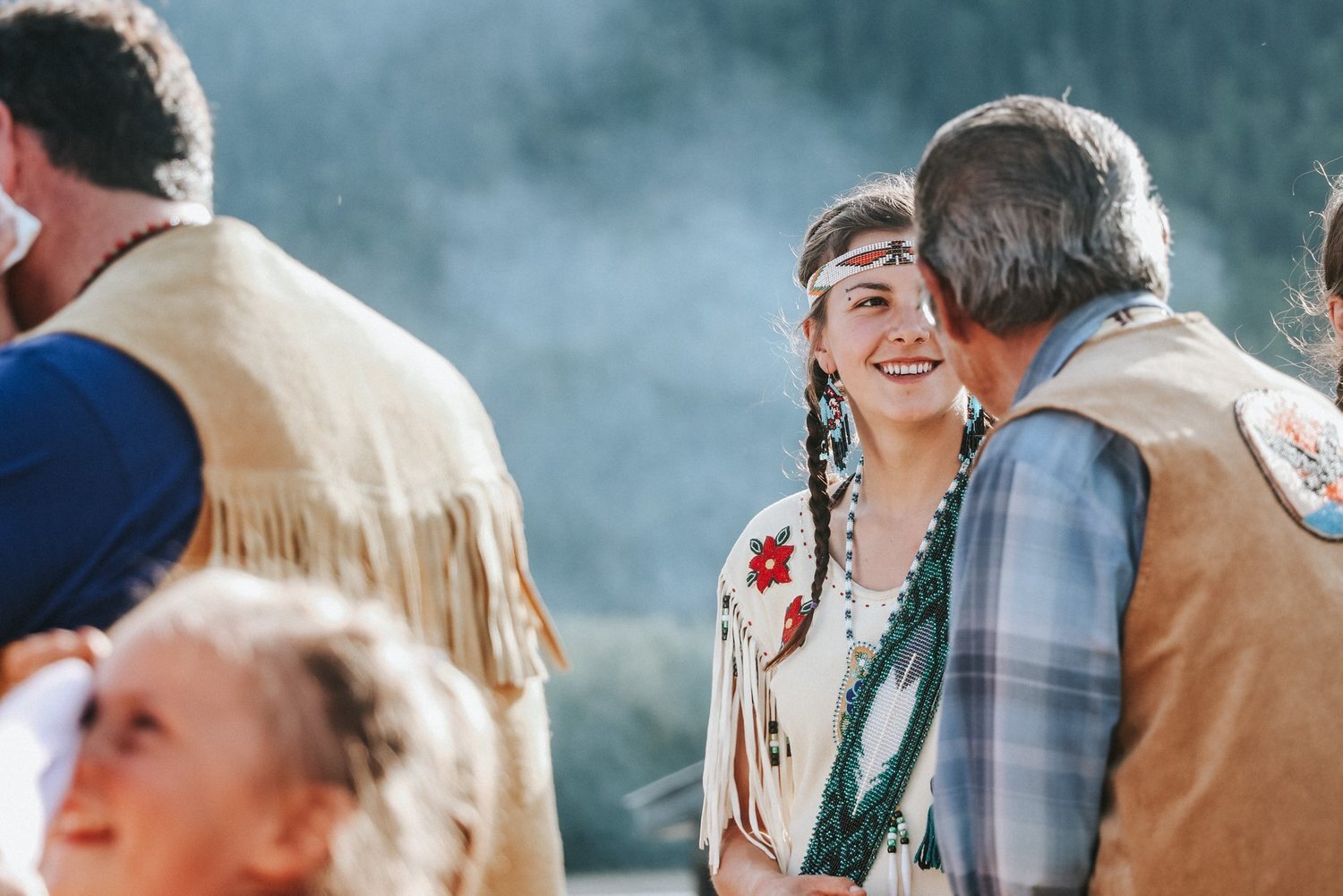
THE STORIES
Some stories are meant to be shared.
Stories live. They should be respected and honoured as an act of sharing, connecting and teaching. Over the past five years — including a pandemic pause — the students of Stories North and people in communities throughout the Yukon have created stories of beauty, struggle, culture, doubt and hope. We are so grateful to be able to share these with you.
The Stories
Dear Dawson
DEAR DAWSON
Love affairs. They can be sweet and intense, rich and complex. Sometimes we share our love with people. Other times, we fall in love with a place.
The two Jeremys of Whitehorse
Two major events coincided in the Dawson City area from July 20 to 29. First, Dawson City’s 40th music festival, which was then followed by the Moosehide Gathering, a celebration of Tr'ondëk Hwëch'in (Hän) culture that occurs every two years. With both events having music and performances at their centre, Dawson City was filled with both Indigenous and non-Indigenous performers of all musical styles.
‘What ties us together’: finding family across decades of separation
When Karrie Wurmann visited Carcross, Yukon, for the first time in more than two decades earlier this summer, it was a moment that she says filled her with “nervous anticipation.”
How one entrepreneur follows the beat of his own drum
Inside Delmar Washington’s office, a map of the Yukon spans an entire wall. A blanket of papers covers a wooden desk. The main office chair sits empty.
Of course, a helicopter pilot’s office isn’t really where he works. Washington stops by his office to do paperwork between flights, but he’s usually in the pilot seat of one of his helicopters.
Náakw: herbalism in bloom
Barreling down a southern Yukon highway in her bright blue Ford F-150, Donna Wolfe spots a large cluster of yellow and pink fluttering in the wind. Hitting the brakes, she throws her truck into reverse, keeping her gaze on the cluster of colour without taking a moment to look into the rear-view mirror.
Re-catching culture: why traditional salmon harvesting is a struggle for Yukon First Nations
“Sixty-six, 66!” Dorothy Sam stopped in her tracks as she thought she heard that number blaring over her walkie-talkie on the picnic table in her small makeshift outdoor kitchen.
She grabbed the radio and scrambled to prepare her fish cleaning station for the 66 chinook salmon her nephew Charles Waugh claimed to have in his net.
Trapped: the challenges of fur in a modern Yukon
At the Long Ago Peoples Place in Champagne, Harold Johnson guides visitors through his recreation of a Southern Tutchone village. He shows an example of a snare once used by First Nations people to catch gophers.
A foundation for the future: inside the tiny homes building opportunity for Yukon First Nations
In early 2014, Nelson Lepine was at a loss. As the former director of infrastructure for Carcross/Tagish First Nation, he was at a standstill with an angry member of his community. The man paid a visit to Lepine’s workplace, frustrated by the state of his life in Carcross and looking for someone to blame.
The 21st century Klondike: a new mining legacy
From the top of the Midnight Dome, visitors look west towards Dawson City, a small cluster of buildings hugging the Klondike River. From high up, the pastel-coloured businesses in town look like miniatures. The hand-painted signs, their frontier-style lettering spelling out “gold” — the lore of the land — can’t be seen, but still exert a powerful force over the community of more than 1,300 people.
Humour can heal
Sharon Shorty’s childhood was full of laughter. Her Gramma Carrie told traditional Tlingit stories to anyone who would listen and she had a knack for making anything funny. Shorty recalls that her grandmother’s presence alone seemed to make those around her laugh hysterically.
Healing people, healing the land: the stewards of Carcross/Tagish First Nation
On a mountainside clearing near the babbling Chooutla Creek - a name meaning “laughing water” in the local Tagish dialect - David Wally is sprinkling tobacco into a small fire. The area was once home to the Chooutla Indian Residential School, and the tobacco is an offering of thanks.
Crafting an ulu
Visitors to Whitehorse’s Adäka Festival attend a knife making workshop with custom knife maker George Roberts. Roberts and his group of eager students got together to craft traditional “ulu” women’s knives.
Cultural connections
From the visual art to the ceremonial songs and dances, Whitehorse’s eight annual Adäka Festival was a culturally rich environment, demonstrating Indigenous art from all over the world.
Eugene Alfred: carver and sculptor
Eugene Alfred, a carver and sculptor of Northern Tutchone and Tlingit ancestry, showcases his craft at the Adäka Cultural Festival on July 2. His current project is a carving which honours Beaver Man, an important figure in Alfred’s Indigenous history who had the body of a man, but the tail and teeth of a beaver.




















